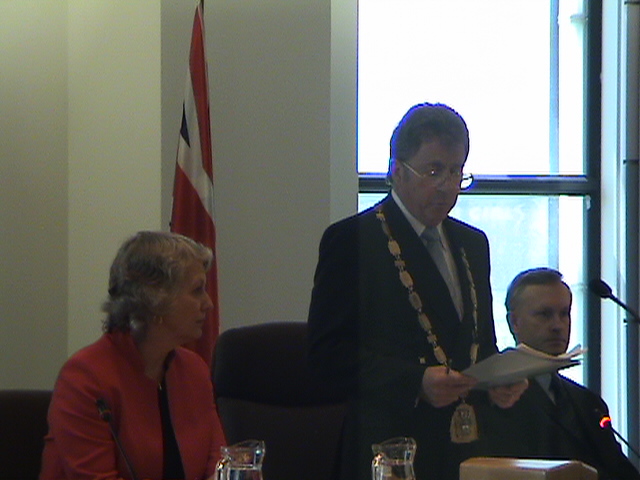Civic Administration Building fire sale: lose-lose for ratepayers
I guess nothing sums up the incompetence and waste of the Super City than the sorry tale of the Civic Administration Building.

Auckland Council’s fire-sale of Dove-Myer Robinson’s Civic Administration Building is a financial disgrace and city planning debacle.
Auckland Council’s fire sale of the Civic Administration Building (CAB), 22 levels, (19 floors and 3 basement levels), 14,000m2 of office space, and 5300m2 of land in the heart of the Auckland CBD for a paltry $3m, with (less than) $100,000 down, the balance upon sale of apartments, has got to be the worse example of public property value destruction in the history of Auckland local government.
Built as Auckland’s first skyscraper, of modernist architecture in 1966, the CAB was carefully sited near the Town Hall on land acquired by the far-sighted former Auckland City Council to form a civic square. Aotea Square was opened by mayor Dove Myer Robinson in 1979 and completed with the opening of the Aotea Centre by mayor Cath Tizard in 1990. At that time, the former City Council extracted all the asbestos that was accessible and practicable to extract from the CAB, confirmed by regular air testing for fibre asbestos indicating the building “was safe for normal occupation” by council staff.
Even before the new Super City had been established in November 2010, I was informed that its incoming leading bureaucrats intended to buy the ASB Bank tower at 135 Albert Street for their new headquarters. The first ‘victim’ of this scheme was actually not the CAB but the former ARC Regional House on Pitt Street. To get rid of this the new Council actually paid the landlord to release it from the four years of the ARC’s lease still to run. An accommodation shortage thus created, a year later a slim majority of Auckland councillors were persuaded to go along with buying the 29-storey Albert Street tower. This was purchased in mid-2012 for $104m followed soon after by $24.5m spent on a plush interior ‘fit out’. Evidently so eager were council managers to move into to what staff call ‘the proud tower’, only cursory due diligence was undertaken. A council finance manager later explained (with unintended irony) that this normal commercial procedure was thought “too costly”. Compounding this blunder, the council waived the building warranty. This would prove to be very expensive for Auckland ratepayers.
Too late it was discovered that “degradation” in the building was far worse than anticipated and at least another $30m had to be found to rectify major faults, especially the granite cladding thought to be at risk of falling off into the streets below. While this repair work began late in 2015, 3½ years later it still drags on. Unbelievably it’s taken nearly as long for the Auckland Council to repair the building as the ASB Bank took to have it built in the first place (1987-1991) – and its not over. The final cost of all this, if past performance is to go by, will be considerably more than the estimated $30m.
No doubt we will be hearing more about the ‘proud tower’ in the future, but for the moment let’s return to the Civic Administration Building. In 2014 after the move en masse to Albert Street, what had been from the time of mayor Robbie Auckland’s bustling centre of civic activity, became a forlorn wasteland; the only movement, paper and leaves blowing about the deserted forecourt.
The CAB’s 22 levels, fit-for-purpose, comfortable indeed, office space, has sat empty for five years during the biggest property boom in Auckland history. Meanwhile council CCOs and the Independent Maori Statutory Board have been paying more than $13m every year, renting high-end office buildings, mainly on the waterfront.
This unprecedented value destruction of property belonging to the people of Auckland could have been avoided if Auckland Council had simply retained and maintained the building for its original purpose, council offices. Instead, trying to drive a square peg into a round hole, the council, via its CCO Panuku, is intent on turning a specialist office building into residential apartments, despite a distinct lack of market appetite for the idea. To this end the building has virtually been given away, not to speak of the land. And don’t forget the lost projected uplift in land value seeing its proximity to the future City Rail Link Aotea station. Typically Mayor Goff has gone along with this sorry affair, cheered on as usual by mayoral sycophant Simon Wilson. Even worse Goff tries to justify what must be the worse property deal in Auckland’s history, calling the CAB “a lemon” and claiming that the building “is riddled with asbestos”. As one property expert said to me, even if the building “was made of solid asbestos”, the $3m price, including over half a hectare of CBD land, would still be a scandal.
The Auckland Council has a statutory purpose to work on behalf of and in the public interest. If the council was your accountant, or your lawyer or your real estate agent – and you had the choice – would you ever employ them again?
Various versions of this article were published in the Ponsonby News (July issue), NZ Herald (24.6.19), the Daily Blog, and The Hobson (July-Aug edition)



